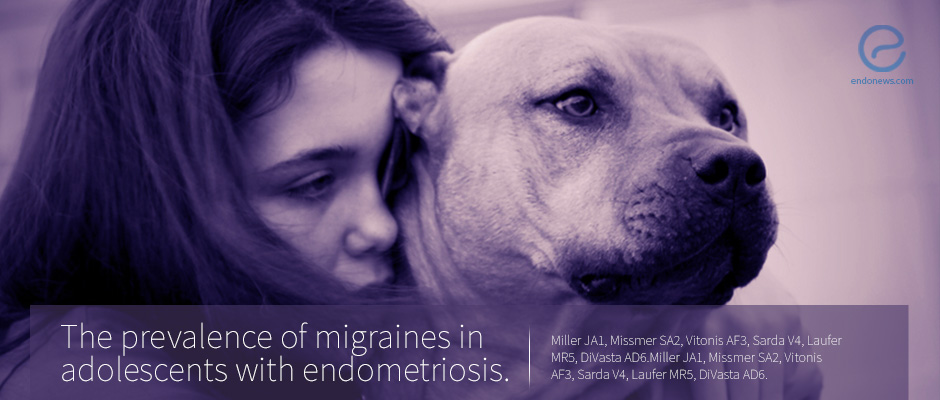Adolescents with Endometriosis are More Susceptible to Migraines
Apr 13, 2018
Female adolescents suffering from endometriosis were found to experience more migraines than their contemporaries without endometriosis.
Key Points
Highlights:
- This cross-sectional study compares the prevalence of migraines in adolescents with and without endometriosis.
- The researchers also analyzed pelvic pain intensity in adolescents suffering from endometriosis and migraines.
Importance:
- Migraines and endometriosis are two painful ailments that can adversely impact an individual’s day-to-day life. Researchers must better understand any link between the two disorders so that potential treatments can be maximized to address both conditions if necessary.
- That being said, at the time of publication, there were no studies that analyzed endometriosis and migraine co-occurrence in adolescents.
What’s done here?
- The researchers recruited adolescent females and then assigned these participants to one of two groups. The first group had adolescents with surgically diagnosed endometriosis and the other group, the control group, had adolescents without endometriosis.
- The participants were given an online health questionnaire that collected information regarding the participant’s lifestyle, medical history, menstrual history, use of medications, measurements, experience with various symptoms, and possible treatments for the aforementioned symptoms.
- Participants reported any migraine diagnosis. The participants rated their migraine pain and noncyclic pelvic pain. The non-cyclic pelvic pain was also categorized with respect to pain status.
Key results:
- 69.3% of the adolescents with endometriosis experienced migraine pain compared to 30.7% of participants without endometriosis.
- Every 1-point increase on the migraine numerical rating scale was associated with a 22% increase in the chance of that participant also having endometriosis. This may be indicative of increased pain sensitivity in the adolescents suffering from endometriosis.
- In the endometriosis group, the age of first menstrual cycle was inversely associated with migraine odds.
- Participants in the endometriosis group that suffer from migraines, had more painful periods and menstrual cramps, namely dysmenorrhea, than the participants in the other groups.
Limitations of the study:
- The researcher used surveys to collect information and surveys are susceptible to accuracy limitations.
- Participants were only recruited from a given geographic area, which means that the results may not be applicable to women from other regions of the world.
- The authors also cite misclassification of control subjects as another limitation.
Lay Summary
Miller et al. recently published an article titled “The prevalence of migraines in adolescents with endometriosis” in Fertility and Sterility. The main purpose of the study was to determine if adolescents with endometriosis experience more migraines than those without endometriosis. The researchers also wanted to analyze pelvic pain in adolescents with endometriosis who are also suffering from migraines.
There were two groups of participants in the study. One group consisted of adolescent females with surgically diagnosed endometriosis. The other group, which is the control group, consisted of adolescents without endometriosis. The participants were given an extensive online health questionnaire. This questionnaire allowed researchers to collect valuable personal information about the participant’s health and lifestyle. The participant also reported their migraine diagnosis and rated their migraine pain and their non-cyclic pelvic pain. Any non-cyclic pelvic pain was also categorized by the participants.
The results show that adolescents suffering from endometriosis were more likely to experience migraines. Every 1-point increase in migraine pain rating is linked with a 22% increased odds of having endometriosis. This aforementioned linear relationship may indicate higher pain sensitivity in adolescents suffering from endometriosis. In the experimental group, namely the group with endometriosis, there was an inverse relationship between the age of first menstrual cycle and migraine odds. Last but not least, the results show that individuals suffering from endometriosis and migraines are more likely to experience dysmenorrhea, painful periods and menstrual cramps.
Research Source: https://www.ncbi.nlm.nih.gov/pubmed/29605402
endometriois migraine pelvic pain adolescents

